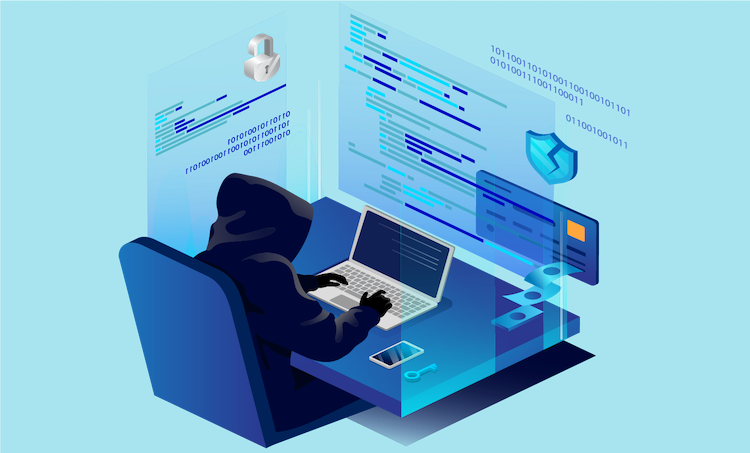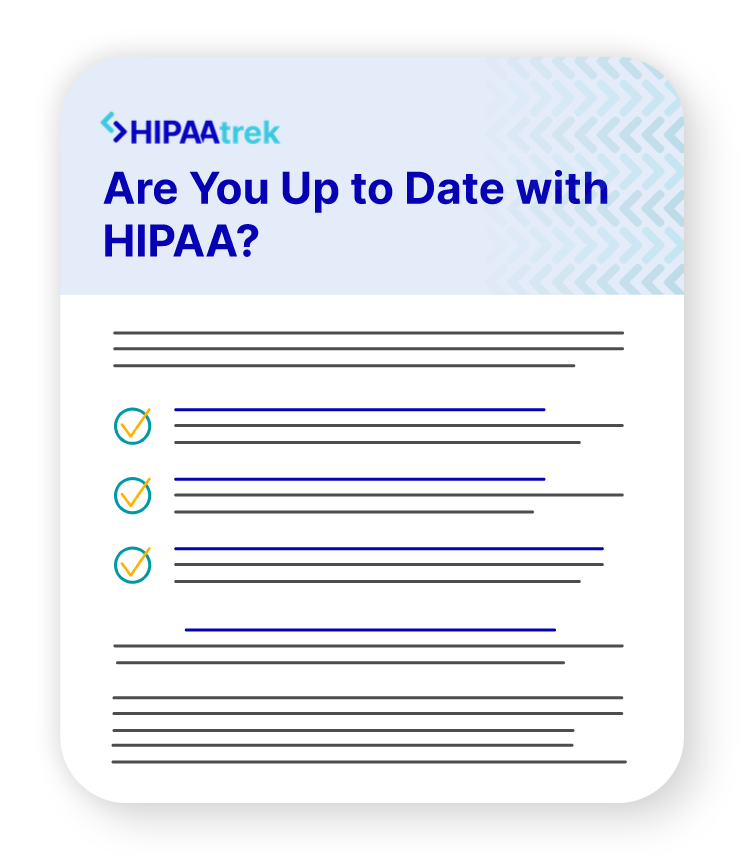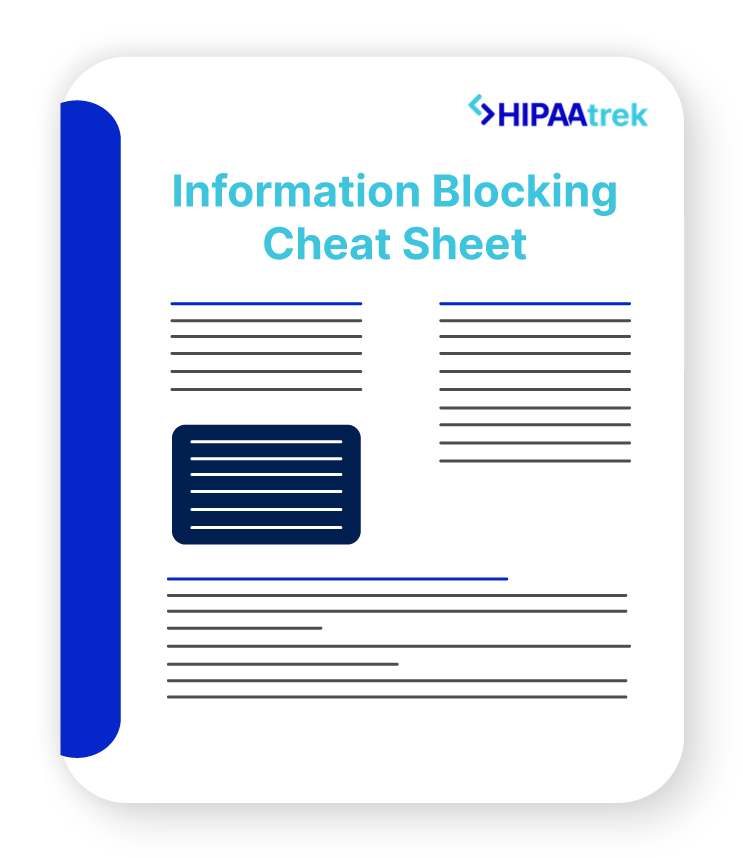If you work in healthcare, you’ve likely heard about the rising wave of data breaches and ransomware attacks in the industry. In 2024, healthcare overtook finance as the most breached industry, with the Change Healthcare breach raising concerns about vulnerabilities in healthcare. Cybersecurity is now rightfully a top priority for hospital leadership.
Today, we’re exploring why exactly healthcare is such a major target—and what can be done about it.
Want to be prepared in the case of a breach at your organization? Download our breach notification letter template and sample now:
Download our Breach Notification Letter Template
Prepare for a potential breach by downloading this template and sample letter.

Now, let’s get into why healthcare is a target for hackers and what you can do about it.
Why is Healthcare a Hacking Target?
The key to securing vulnerable data is first understanding the threat. So, why is healthcare such a major hacking target? Cybercriminals are drawn to healthcare due to three key factors:
1. Staffing
As you might know, healthcare IT departments are often understaffed. Hospitals are pricey businesses to run and have a lot of expensive personnel like doctors—so IT is often the area where hospitals think they can cut costs.
A typical hospital may have only one IT professional for every 100 computers, whereas financial institutions and manufacturing sectors often have a much stronger ratio. Low staffing means fewer eyes on the systems used to support critical infrastructure and information.
Additionally, healthcare IT budgets lag behind other industries. While financial institutions allocate around ten percent of their operating revenue to IT, hospitals typically spend only two to three percent. This funding gap makes hiring and retaining cybersecurity professionals challenging.
The problem is even more pronounced in rural areas, where finding IT staff who have both healthcare and cybersecurity expertise is difficult.
2. The Complexity of Healthcare Systems
Healthcare IT infrastructure is among the most complex of any industry. Electronic Health Record (EHR) systems have to integrate seamlessly with laboratory information systems, radiology systems, pharmacy systems, and external networks like insurance payers and reference labs.
Each integration point introduces potential security vulnerabilities. Unlike retail or financial IT systems, which are relatively straightforward to secure, hospital networks resemble sprawling, multi-entry ecosystems that require constant vigilance.
3. The High Value of Healthcare Records
Healthcare data is valuable. Medical records are among the most prized assets on the dark web. A complete patient record can sell for thousands of dollars, compared to just a few dollars for stolen credit card numbers or Social Security numbers.
Consider the contents of a healthcare record: this information is highly sensitive and includes demographic data, employment history, insurance details, and even photographs. Cybercriminals exploit this data for:
- Identity theft
- Insurance fraud
- Medical billing fraud
- Focused Ransomware attacks on other individuals
The wealth of exploitable data is one of the major reasons that healthcare is a prime target for hackers.
Cybersecurity in Healthcare
You’re beginning to understand the risks, but if you’re left wondering what you’re supposed to do about this rise in data breaches, you’re not alone. To begin to combat this targeting of healthcare, let’s start by understanding what HIPAA has to say about security.
HIPAA Security Rule Compliance
The HIPAA Security Rule was written to encourage people to do what they need to do to keep their organization safe, without being too prescriptive. Because of this, organizations have to do their own assessment of their security program and determine how well the controls are working to keep facilities and their PHI secure.
Sometimes even the seemingly smallest violation can result in a serious breach. For example, security guidelines require using unique login IDs into systems, but we still see hospital staff, especially at small organizations, using generic login IDs, creating vulnerabilities.
To address potential risks like these and fulfill HIPAA requirements, our clients use HIPAAtrek’s Security Reminders module. Our automated system sends regular emails to relevant staff with timely security information.
Concerned about ransomware and phishing? Schedule a message that reminds people not to click on mysterious links and provides training on how to avoid phishing scams.
Security Reminders are required under the HIPAA security rule, and HIPAAtrek can help you centralize, automate, document, and track every step of fulfilling this requirement. Learn more about HIPAAtrek here.
The HIPAA Security Rule also mandates administrative, physical, and technical safeguards to protect patient data. And the best way to uncover gaps in your compliance (and the safety of PHI)? Begin with the SRA.
Conducting a Security Risk Analysis
While HIPAA states that your Security Risk Analysis (SRA) should be conducted “periodically”, due to evolving security threats, an SRA should be performed at least once a year to reassess risks and update security measures.
The other time you may need to complete an SRA? After significant changes. Any major operational or technological change that impacts security should trigger a new SRA.
Examples include opening a new clinic, merging with another healthcare entity, implementing a new electronic health record (EHR) system, or upgrading or replacing networking infrastructure. If you’ve been through any of these major changes lately, it’s time for an SRA.
Ultimately, the SRA is more than just an item to check off your HIPAA checklist—it is foundational to your HIPAA security program, and even your broader HIPAA compliance. Failing to conduct risk analysis frequently enough or overlooking it after major changes can leave healthcare organizations vulnerable to data breaches and compliance violations.
When done correctly, your SRA verifies that security controls are in place and effective, identifies new and emerging threats (like the growing risk of ransomware), and reduces the risk of breaches and regulatory penalties.
By identifying gaps and potential issues, your SRA is a roadmap to compliance and cybersecurity. That’s why we frequently reference starting with the SRA—because it truly is foundational.
Read this article for more details on how to conduct a thorough SRA.
Understanding The Ransomware Threat
Ransomware threats are growing more sophisticated and successful at exploiting vulnerabilities in networks through phishing attacks. Attackers often gain initial access by sending convincing emails that trick users into clicking malicious links. Once inside, they move laterally through the system, identifying weak points in workstations and servers rather than directly attacking firewalls.
Security measures, like strong firewalls, remain important, but organizations must also focus on internal network security. Keeping operating systems and servers updated is crucial since many intrusions occur because of unpatched vulnerabilities rather than direct breaches.
The increasing use of AI makes phishing emails more deceptive and effective. Unlike in the past, when poor grammar or awkward phrasing signaled a scam, today’s phishing attempts are highly polished and nearly indistinguishable from legitimate communications. This makes it harder for users to identify threats.
Promoting Awareness of Cybersecurity Issues
Security awareness remains a key defense against ransomware. Regular reminders—such as posters, table tents, and digital alerts through systems like HIPAAtrek—help reinforce good security habits.
Since human error is one of the biggest risk factors, organizations must educate employees on recognizing phishing attempts and staying vigilant. Even well-meaning individuals can inadvertently open the door to ransomware by clicking on what appears to be a legitimate email.
Ultimately, defense requires a multi-layered approach, balancing technical security measures with ongoing employee awareness and HIPAA training.
To mitigate risks, healthcare organizations should consider these steps:
- Increase IT and cybersecurity budgets to improve staffing and security infrastructure.
- Conduct regular Security Risk Analyses to identify and address vulnerabilities proactively.
- Implement stronger access controls and authentication measures to protect sensitive data.
- Educate staff on cybersecurity best practices to reduce human error.
- Develop a ransomware response plan to ensure business continuity in case of an attack.
Healthcare Cybersecurity 2025
Maintaining a secure and compliant healthcare system is all about understanding what your threats, vulnerabilities, and risks are, and protecting yourself from them.
An SRA is the foundation of your security compliance program that you can build policies and procedures on top of to keep your organization secure. From there, understanding the risks to healthcare records, and the element of human error are key steps in protecting PHI.
Want to be prepared in case of a breach? Download our breach notification letter template now.
Get Your Breach Notification Letter Template and Sample
Prepare for a potential breach with this template and sample letter.













